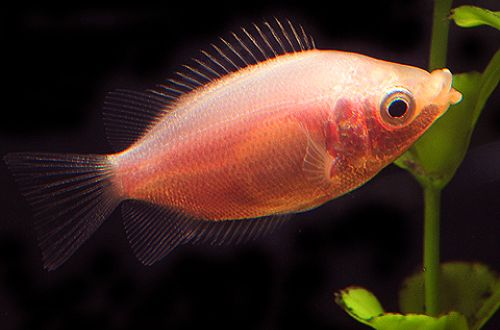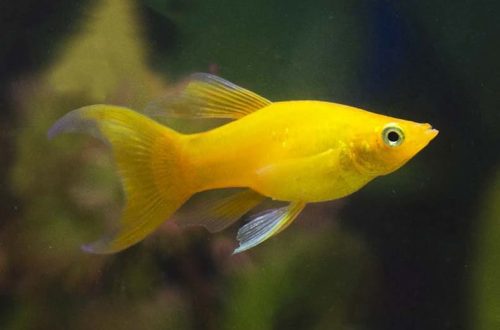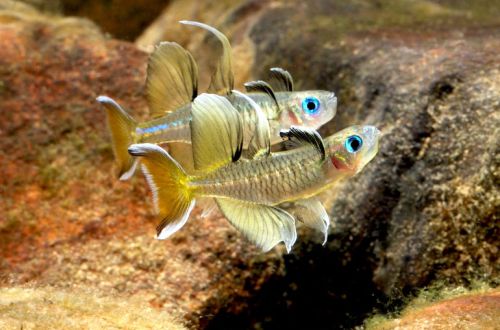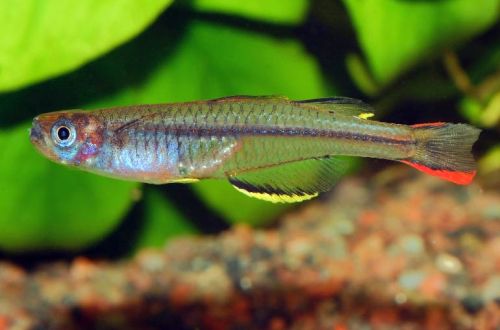
Pink Gourami
The Pink Kissing Gourami, scientific name Helostoma temminkii, belongs to the Helostomatidae family. One of the artificially bred varieties of the Kissing Gourami, it has a rounded body shape and is noticeably smaller than its predecessor.

The special structure of the mouth is also inherited, as if ready for a kiss, with large lips. Due to which the fish scrapes algae from the surface of glass, interior objects, but can also stick to the body of other fish. This is a beautiful and hardy species, but their temperament and not small size make it impossible to classify Gourami as a simple fish, therefore it is recommended for experienced aquarists.
Habitat
Not found in the wild, an artificial species derived from the Kissing Gourami. Sometimes the names “Globular Kissing Gourami” or “Pygmy Kissing Gourami” are found.
Description
Relative to its predecessor, it has a small body up to 13 cm long. It is somewhat rounded, spherical. The coloration is predominantly pink or pinkish-orange with transparent fins. A distinctive feature is the structure of the mouth. It has thick fleshy lips with fine teeth on the inner surface. With the help of them, Gourami scrapes algae from various surfaces (glasses, interior items).
Food
With pleasure he uses all types of dry industrial feed (flakes, granules, tablets, etc.), you can diversify the diet by adding bloodworms (live or frozen). It is recommended to serve pieces of fresh vegetables: cucumber, lettuce, zucchini, peas, etc. Be sure to remove uneaten leftovers from the aquarium so that they do not pollute the water. Feed once or twice a day is sufficient.
Maintenance and care
Endurance and the ability to absorb atmospheric oxygen should not be misleading. Gourami requires high quality water, which should preferably be renewed a quarter of a week. During the periodic cleaning of the aquarium, leave the back wall untouched so that a layer of algae remains on it, as a source of additional nutrition. An important requirement for the filter is that it must be productive, but at the same time not create water movement, since fish prefer stagnant waters with a weak current. The presence of a cover allows you to create a layer of air above the surface of the water with high humidity and a temperature above room temperature. Thus, when the fish swallows atmospheric air, it is possible to avoid sharp contrasts and the likelihood of damage to the labyrinth organ will be minimized.
In the design, organize several shelters made of natural or artificial materials in the form of snags, grottoes, sunken ships, castles. Any soil, dark shades enhance the color, a bright substrate (yellow, red, blue, etc.) is not desirable. Plants are arranged in groups, it is worth giving preference to varieties with hard leaves or artificial. Floating plants are allowed, provided they do not obstruct access to the surface for fish.
Social behavior
Juveniles get along well with all fish of similar size and temperament, however, in adulthood, the character changes. The Pink Kissing Gourami is a territorial fish with a clear intraspecific hierarchy, so if several individuals are kept together in a small aquarium, a struggle for dominance will inevitably begin. Other neighbors may also be targeted.
The optimal conditions are when only a few fish are stored in one tank, and there is about 100 liters of space per individual. In no case should be kept together with fish prone to biting fins (for example, Barbs), slow Gourami will be an excellent target for them.
Breeding / breeding
This breeding species is quite difficult to breed, the problems lie both in creating the necessary conditions and in compatibility. If two or three fish are kept, it is quite possible that they are of the same sex, and there are no noticeable visible differences between the male and female.
Successful breeding is possible in a separate tank at least 90 cm long and 60 cm high. The set of equipment consists of a lighting system, a heater, a simple airlift filter. The water parameters must match those of the general aquarium. In the design – root and floating plants with small leaves, the presence of “Riccia floating” is desirable; any soil.
The incentive for spawning is the inclusion of meat products in the daily diet. After a while, the male will begin to show signs of attention to the female. He swims around her with outstretched fins, at this moment the pair should be transplanted into a separate tank. Courtship continues until the female releases all the eggs that float and remain on the surface. Parents are returned back to the common aquarium. In total, several thousand eggs can be released, fry appear during the day, they are also constantly near the surface. They will be free to swim only after three days. Feed microfeed, ciliates.
Diseases
In a balanced aquarium, health problems do not arise, when conditions worsen, they become predisposed to infectious diseases, and digestive problems arise. Read more about symptoms and treatments in the Treatment of Aquarium Fish section.





